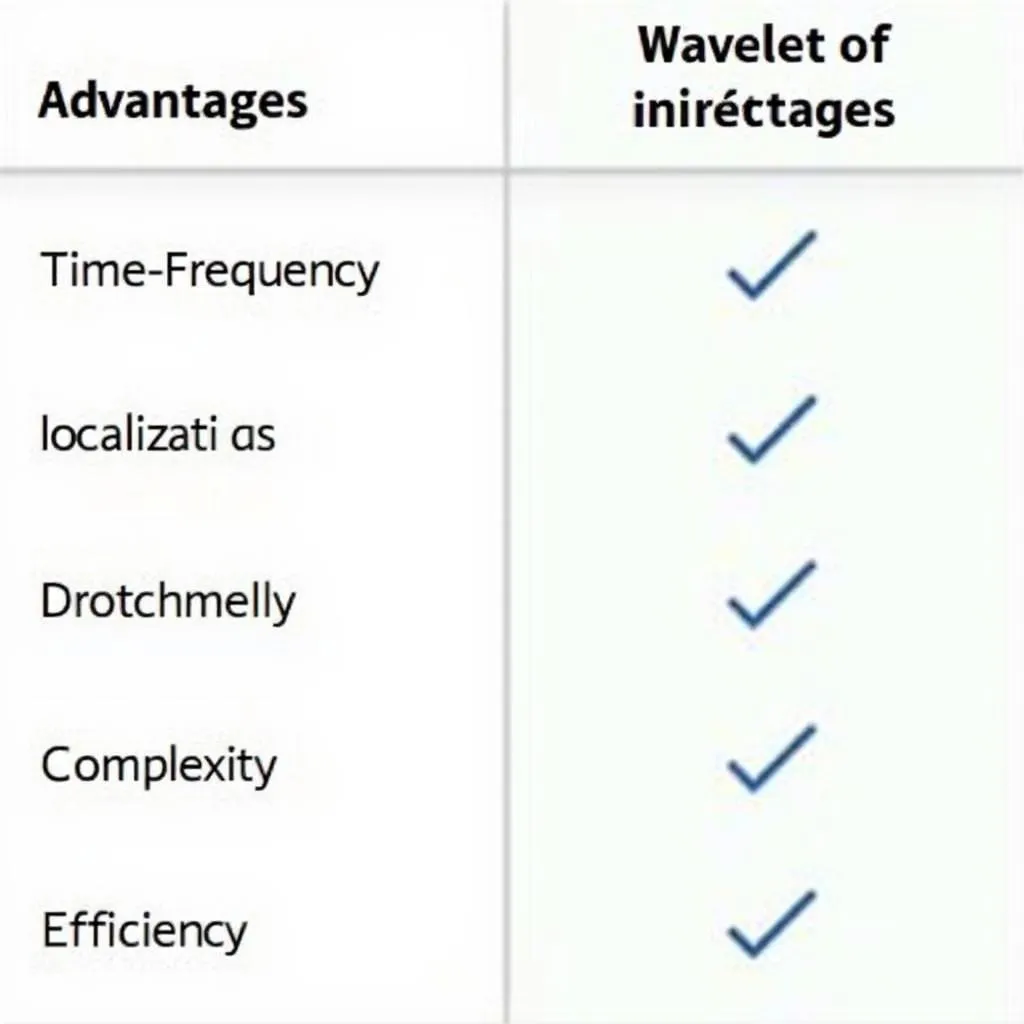Wavelet analysis is a powerful tool that has revolutionized the field of signal processing. Unlike traditional Fourier analysis, which decomposes a signal into a sum of sine and cosine waves, wavelet analysis uses a set of localized waves called wavelets. This allows for a more nuanced and efficient representation of signals, especially those with transient features and discontinuities.
What Makes Wavelets Special?
 Wavelet Analysis in Signal Processing
Wavelet Analysis in Signal Processing
The magic of wavelets lies in their ability to analyze signals both in time and frequency simultaneously. This property, known as time-frequency localization, makes wavelets ideal for analyzing non-stationary signals, whose frequency content changes over time. Imagine trying to understand a musical piece by only looking at the frequencies present without knowing when each note is played. Wavelets provide both the “what” (frequency) and the “when” (time), painting a complete picture of the signal.
A Journey Through Different Wavelet Families
Just like a diverse set of tools is needed for different tasks, various wavelet families have been developed to suit specific signal processing needs. Some popular ones include:
- Haar Wavelet: The simplest and computationally efficient wavelet, often used for basic signal approximation and edge detection.
- Daubechies Wavelets: Known for their excellent localization properties, making them suitable for image compression and denoising.
- Morlet Wavelet: Resembles a sinusoidal wave modulated by a Gaussian window, commonly employed in applications involving oscillatory signals like vibrations and seismic data.
Choosing the right wavelet family depends on the characteristics of the signal and the objective of the analysis.
Applications Across Diverse Fields
The versatility of wavelet analysis has led to its widespread adoption in various domains:
- Image Processing: Wavelets are instrumental in image compression (JPEG 2000), denoising, and edge detection, leading to sharper and higher-quality images.
- Audio Processing: From music compression (MP3) to speech recognition, wavelets excel at capturing the nuances of sound signals, allowing for efficient storage and analysis.
- Biomedical Engineering: Wavelets aid in analyzing electrocardiograms (ECGs) and electroencephalograms (EEGs), helping diagnose heart conditions and brain activity.
- Financial Analysis: Wavelets are employed in financial time series analysis to identify trends, predict market fluctuations, and manage risk.
This is just a glimpse into the vast landscape of wavelet applications, which continue to expand with advancements in research and technology.
Advantages and Limitations: A Balanced Perspective
 Pros and Cons of Wavelet Analysis
Pros and Cons of Wavelet Analysis
Like any powerful tool, wavelets come with their own set of advantages and limitations:
Advantages:
- Excellent Time-Frequency Resolution: Ideal for analyzing non-stationary signals with transient features.
- Computational Efficiency: Wavelet transforms can be computed efficiently, making them suitable for real-time applications.
- Multiresolution Analysis: Wavelets can analyze signals at different scales, providing a hierarchical representation.
Limitations:
- Choice of Wavelet: Selecting the optimal wavelet for a given task can be challenging and problem-dependent.
- Computational Complexity: For complex signals and large datasets, wavelet analysis can be computationally intensive.
- Boundary Effects: Wavelet analysis can introduce artifacts at the edges of signals, requiring careful handling.
Understanding these trade-offs is crucial for leveraging the power of wavelet analysis effectively.
Embark on Your Wavelet Exploration
Wavelet analysis is a captivating journey into the world of signal processing, offering a powerful and versatile set of tools to unlock insights hidden within data. Whether you are an engineer, scientist, or simply curious about the intricate dance of signals, exploring wavelets will undoubtedly broaden your horizons.
Need assistance navigating the complexities of signal processing with wavelets? Contact us at Phone Number: 0373298888, Email: SEO.backlink@gmail.com, or visit our office at 86 Cau Giay, Hanoi. Our dedicated team is available 24/7 to provide expert guidance and support.